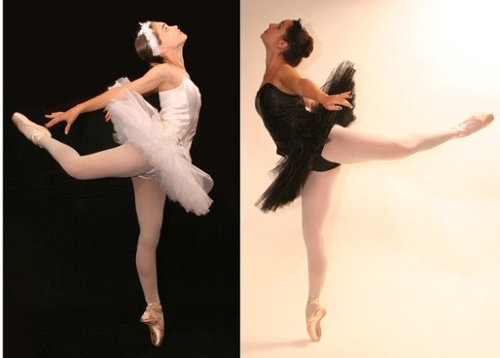Ballet is a beautiful art form that can enrich a child's life in many ways. Starting ballet at a young age allows children to benefit from proper technique training during their early development. Youth ballet classes nurture self-expression, physical fitness, and mental focus from an early age.
Most youth ballet programs have different class levels based on age and ability. A typical progression is:
- Creative Movement - ages 3-4 introduce basic ballet steps through imaginative games and exercises.
- Pre-Ballet - ages 5-6 focus on ballet fundamentals, coordination, and musicality.
- Primary - ages 7-8 build technique, balance, and flexibility through barre and center work.
- Level 1 - ages 8-10 begin connecting steps into combinations and building stamina.
- Level 2 - ages 10-12 work on technique precision, performance skills, and more complex choreography.
- Level 3 - ages 12-14 concentrate on pre-professional training, strength, and expression.
The sequential levels allow students to progress while developing proper technique during their growing years. Starting ballet early allows time to build a strong technical foundation.
Choosing the Right Dance School
When selecting a dance school for your child's ballet education, it's important to consider the credentials and experience of the instructors, the reputation of the school, and the quality of the facilities.
Instructor Qualifications
Look for instructors who are certified by major dance organizations like the Royal Academy of Dance or the Imperial Society of Teachers of Dancing. They should have years of professional performance experience as well as experience teaching students of different ages and abilities. Ask about their training background and continuing education. The best schools will have instructors who actively take class and workshops to continue developing their own skills.
Reputation and Alumni Success
Established pre-professional schools will highlight the achievements of former students who have gone on to dance professionally or gain admittance to prestigious summer intensives or performing arts schools. Read testimonials from current and former students. Schools with a good reputation will have strong word-of-mouth referrals within the local dance community.
Facilities
Look for spacious, sprung-floor studios with mirrors and barres. There should be enough room to accommodate classes safely. Changing rooms and restrooms should be clean and well-maintained. Waiting areas for parents should be comfortable and have wifi access. The school should use up-to-date sound systems and have policies for cleaning and studio ventilation.

Age-Appropriate Ballet Classes
When beginning ballet, it's important for children to be in classes with peers at a similar age and ability level. This allows instructors to tailor the curriculum and teaching methods appropriately. Here's an overview of common age divisions for youth ballet classes:
Ages 3-7 (Children's/Primary)
- Focus on creative movement and ballet basics
- Develop coordination, spatial awareness, and musicality
- Gentle stretches, simple barre exercises, center floor skills
- Basic ballet steps like plié, tendu, chassé
- Use of props like wands, hoops, and ribbons
- 30-45 minute classes once or twice per week
Ages 7-10 (Preparatory)
- Expand technical foundation with more complex exercises
- Increased emphasis on French ballet terms and technique
- Barre work focuses on alignment, flexibility, strength
- Center combinations with bigger movements and jumps
- Introduce partnering skills like taking hands and promenading
- 45-60 minute classes twice per week
Ages 10-14 (Secondary)
- Barre and center work focused on developing technique
- Pointe work introduced for girls around age 11-12
- Partnering skills like supported pirouettes and promenades
- Performance quality and artistry become more important
- 60-90 minute classes 2-3 times per week
- Supplement with private coaching and workshops
Pre-Professional and Intensive Programs
For students who demonstrate exceptional talent and dedication, many dance schools offer pre-professional and intensive training programs. These programs provide rigorous, comprehensive ballet training for aspiring professional dancers.
Pre-professional classes are designed to take dancers to the next technical level, with a focus on developing strength, artistry, and versatility. Classes meet multiple times per week and have an accelerated curriculum to challenge dancers. Students must meet certain technique and performance standards to advance into pre-professional levels.
Intensive summer programs allow pre-professional students to immerse themselves in dance for several weeks. Programs bring in esteemed guest instructors and often expose students to different styles like modern, jazz, and contemporary. Summer intensives require long hours in the studio, building both technique and stamina.
Admission into pre-professional programs is by audition only. Dancers are evaluated on their technical skills, athleticism, focus, work ethic, and potential for growth. The audition process assesses dancers' current abilities and readiness for advanced training. Students must demonstrate a commitment to pursuing dance at an elite level.
Pre-professional ballet training develops versatile, resilient dancers prepared for a career in professional companies or collegiate dance programs. With diligent training and dedication, these programs can propel talented youth to reach their highest potential.
Adaptive Dance Classes
Adaptive dance classes provide inclusive programs for students of all abilities, including those with special needs. These classes offer a number of benefits for children's physical, cognitive, and social development.
The curriculum is customized based on each student's individual needs and goals. Instructors work closely with parents and therapists to understand the child's strengths and challenges. Classes focus on building coordination, balance, strength, and flexibility through creative movement and dance activities.
Adaptive dance helps improve motor skills, rhythm, and body awareness. The multi-sensory environment, including music and props, engages visual, auditory, and tactile learning styles. Students also gain confidence and self-expression through dance. The social nature of class allows them to interact with peers in a fun, nurturing environment.
Instructors employ various techniques to make dance accessible and rewarding for all students. Visual demonstrations, verbal cues, physical prompting, and adaptive equipment are used to support dancers. Classes also incorporate visual schedules, sensory integration, and repetition to reinforce skills.
By participating in adaptive dance, students with special needs can experience the joy of movement and dance. The programs build vital life skills while providing a creative outlet for students to gain independence and shine.
Adult Ballet and Fitness Classes
Adult ballet classes provide a great way for grown-ups to explore their passion for dance. Many local dance studios offer beginner level adult ballet classes that welcome dancers of all backgrounds and experience levels. These introductory classes focus on teaching the fundamentals of ballet technique in a relaxed and non-competitive environment.
For adults who already have some dance experience, more advanced ballet classes take dancers to the next level. These classes build on existing technique and challenge dancers to improve their skills. Pointe work, partnering, and more complex choreography are introduced at the advanced level. Some studios also offer adult ballet classes en pointe for experienced dancers with previous pointe training.
In addition to traditional ballet classes, many studios offer adult ballet fitness classes that combine ballet technique with a dance-inspired workout. These classes have a fitness focus, integrating moves like pliés, tendus, and other ballet steps into a high-energy cardio and toning class. Ballet barre classes are another popular fitness option, concentrating on small, isometric movements to sculpt long, lean muscles.
For adults interested in a multi-disciplinary approach, ballet can be effectively combined with modern dance, jazz, and other styles. Classes that blend multiple genres create dynamic hybrid techniques while improving strength, flexibility, coordination and more. With open-mindedness and a spirit of creativity, adults can find great fulfillment continuing their ballet journey.
Facilities and Locations
When choosing a dance school for youth ballet classes, it's important to consider the studio facilities and locations. The ideal studios will have spacious studios with sprung floors designed specifically for dance. This absorbs shock and reduces impact on dancers' joints. Mirrors along one wall allow students to check their form and placement.
Other amenities like changing rooms, student lounges, and viewing areas for parents make the overall experience more enjoyable. Having multiple studios in one location allows for simultaneous classes and summer intensives. The studios should be clean, well-maintained and have adequate heating, cooling and ventilation.
Convenience and accessibility are also key factors. Studios located close to residential areas with ample parking make it easy for families to get to classes. Proximity to public transportation is another plus. Locations that are accessible for those with disabilities are ideal.
Safety is a top priority. The facilities should be secure with check-in procedures for students. Exits should be clearly marked and evacuation plans in place. Studios must meet local fire codes and building regulations. Having trained staff on hand provides oversight and assistance if needed.
When touring potential studios, be sure to visit in-person to evaluate all these aspects. The right facilities will provide a nurturing yet professional environment for budding ballerinas and danseurs to thrive.
Performance Opportunities
Youth ballet classes provide students with exciting performance opportunities to showcase their skills and build confidence. Annual recitals allow dancers to perform pieces they have been working on in class in front of family and friends. These recitals help young dancers get comfortable being on stage and boost their self-esteem.
Many dance schools also have competitive dance teams that perform at regional and national dance competitions. Competing gives dancers experience with auditioning, learning choreography, and performing under pressure. It teaches teamwork and motivates students to refine their technique. Awards and recognition at competitions is an added bonus!
The rehearsal process leading up to performances is invaluable. Students practice projection, expression, and stage presence. They learn how to engage with an audience and exude confidence. Performance opportunities create memories that will last a lifetime and give young dancers a sense of accomplishment.
Summer Ballet Programs and Workshops
Summer provides an ideal opportunity for aspiring young dancers to immerse themselves in intensive ballet training. Many dance schools and companies offer summer dance intensives, workshops, and camps to help students improve their technique and artistry over the summer break.
These summer programs allow dancers to take their training to the next level under the guidance of top-notch instructors. Students may take multiple ballet classes per day, in addition to classes in other dance styles like jazz, contemporary, and modern. The intensified schedule helps dancers build strength and stamina.
Another benefit of summer intensives is the chance to learn from guest instructors who are professional dancers, choreographers, and master teachers. Getting exposed to different teaching styles and perspectives can be invaluable for a student's development. The guest faculty provide insights and expertise gained from years of performing experience.
While classical ballet is the core focus, summer programs also let students explore other genres like character, folk, and historical dance. Diversifying their dance education allows them to become well-rounded dancers. Some intensives also incorporate dance history lectures, anatomy classes, and choreography workshops into the curriculum.
With their concentrated format and exceptional faculty, summer intensives provide the perfect chance for dedicated young dancers to grow their technical skills and artistry. Students return to their regular season with renewed inspiration, confidence and improved abilities.
Resources for Students
One of the most important aspects of youth ballet is having the proper attire and equipment. Here are some tips:
- Attire - Girls should wear pink or black leotards, pink tights, and pink ballet slippers. Hair should be pulled back neatly in a bun. Boys should wear a white fitted t-shirt, black tights or shorts, and black ballet slippers.
- Ballet Slippers - Make sure to get properly fitted ballet slippers with the correct width and support. Slippers should conform closely to the foot. Avoid wrinkles in the fabric or excessive room in the toes.
- Ballet Bag - Use a dedicated ballet bag to transport shoes, water bottle, towels, etc. Choose a lightweight style with compartments to keep items organized.
- Hair Supplies - Hair nets, bobby pins, hair spray and hair elastics help create a tidy ballet bun. Stock up on these so you'll always be prepared.
- Yoga Mat - Bring a yoga mat for floor work and conditioning. This provides padding and comfort.
Injury prevention is also key. Here are some tips:
- Perform proper warm-ups and stretches before class to reduce injury risk.
- Stay hydrated and fuel up with nutritious snacks to maintain energy.
- Listen to your body and don't push through pain. Communicate with teachers if an injury occurs.
- Allow proper rest between classes and training sessions.
- Wear proper footwear outside the studio to avoid slips and falls.
Online resources can enhance your ballet education. Useful sites include:
- Dance Advantage - Articles and tips on technique, health, and training
- Pointe Magazine - News, training tips, and inspiration
- Dance Spirit - Videos, advice, and stories on the world of dance
- Dance Informa - Dance education news and insights
Connecting with fellow students on forums and social media can also provide motivation and support. Just stay safe and remember that everyone progresses at their own pace.
Discover the top recommendations from Camps With Friends for exceptional performing arts and Ballet Studios/summer camps.




